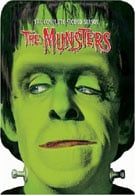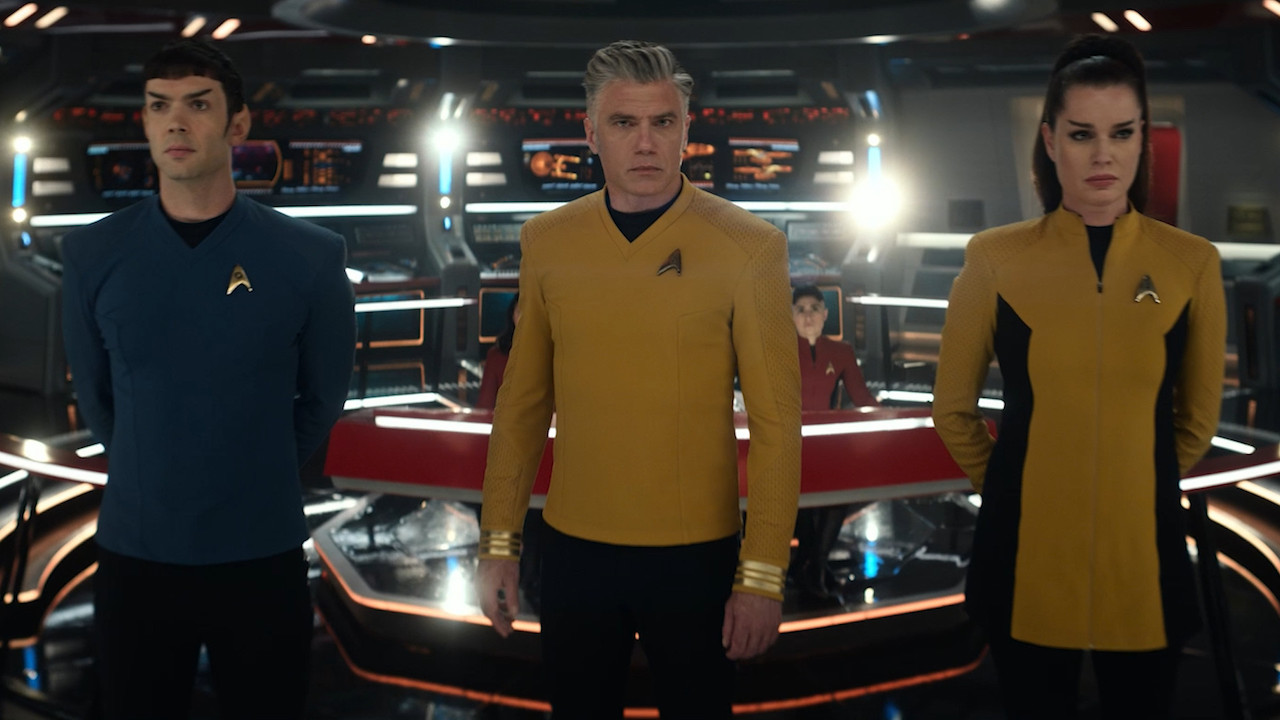In 1964, Universal decided that its staple of classic horror monsters should be put to good use now that the black-and-white horror boom had faded. Thus was born "The Munsters," which recycled the horror staples into an unusual, but functional, suburban household of ghouls. Now Universal brings the second and final season to disk, with monstrously mixed results. You know the set-up. There's Herman (Fred Gwynne), the lumbering, oafishly loveable science project of a certain Dr. Frankenstein, who brings home the bacon via his 9-to-5 at the local mortuary. He's married to Lily (Yvonne De Carlo), a lovely vampire who's more interested in baking dragon-wing cookies than in nibbling on the local townsfolk. Their only child is Eddie (Butch Patrick), inexplicably a werewolf, since lycanthrophy is apparently a recessive gene. Then there's Grandpa (Al Lewis), also a vampire, whose forays into mad science tend to end up with Herman exploding or inanimate objects suddenly sprouting facial hair. And finally, there's the black sheep of the family, Marilyn (Pat Priest), the perfectly normal, perfectly lovely black sheep of the family (cursed as she is with Cosmo good looks and nary a tiny of green pigment).
Unless you've somehow avoided television entirely for the past 40 years, it's almost inconceivable that you haven't sat through an episode or 12 of "The Munsters." The show was—you'll forgive me—a monster hit in its two short seasons, riding high on the crest of the network trend that gave us "The Addams Family," "I Dream of Jeannie," and "Bewitched." Over the course of its run, the cast became superstars, appearing on magazine covers, cereal commercials, and lunch boxes. They were the Simpsons of their day, and Eddie probably would have pitched for Butterfinger if somebody had thought of it at the time. By its second season, though, the Powers That Be were already trying to meddle with success. As is explained in some of the set's supplementals, the second season saw a shift toward more slapstick humor, with Herman and Grandpa constantly finding excuses to be stuck inside runaway go-karts or getting conked on the noggin with bowling balls. No one slips on any banana peels, but had the show gotten a third season, it was just a matter of time.
According to one of the set's featurettes, it's a narrative direction that actors Gwynne and Lewis frowned upon, feeling it detracted from the characters, and I can't say I disagree with them. When the show soars is when it trusts to its writing and its performers: it's been said that comedy is character, and this season's best moments prove that as well as any other argument I've seen. Simple but clever conceits such as making Herman—himself a product of unorthodox science—a devout rationalist, decrying superstition in favor of reason, are rife for exploitation, but don't get used nearly enough.
Gwynne also accounts for the season's high point in "Just Another Pretty Face," where Grandpa's magical mishap transforms Herman into a human being—Fred Gwynne, sans make-up. It's a conceit that allows the actor to shine, and which proves that very little of what makes Herman a character still beloved four decades later has to do with the flat head or the platform boots. With a core of talented comedic performers, it's a shame that the writers too often relied on the pie-to-the-face school of comedy. They could just have easily locked Gwynne and Lewis in a room and let them riff off each other, and they probably would have gotten funnier material out of it. It certainly would have earned more chuckles than watching Herman throw a tantrum and knock down ceiling plaster…again.
Perhaps the strongest selling point of "The Munsters" is still that of nostalgia, as the relatively simplistic storytelling and characterization are products of an age before decades of overuse had beaten the life from the traditional sitcom format. Having hit both narrative and ratings dead-ends with "Joey", today the half-hour comedy is in the process of evolving, spawning all manner of fascinating, funny chimera such as "My Name is Earl", "The Office", and "Arrested Development." For "The Munsters", the only foray into experimentation was the nature of the family. They may be green-skinned ghouls, and the situations that entangle may be a bit more fantastical than the weekly adventures of Lucy Ricardo or Dick Van Dyke, but the fundamental sitcom tenet of "hair-brained scheme goes terribly wrong" is more or less the shape of every single episode of the season. Nostalgia for childhood afternoons spent watching Herman and company back-to-back with "The Addams Family" will carry you far, but watch more than a few episodes in one sitting and your mind may wander to questions like Why doesn't Lily burst into flames when she goes outside during the day?" or "Why would Frankenstein's monster and a vampire produce werewolf offspring?"
And if that's not a depressing side effect of growing older, I don't know what is. This is a frustrating section to write, because the extras on this set are actually quite good. We'll talk about the good before we delve into why that star rating up there isn't any higher.
The set features around three hours of extras, divided up into several long featurettes. The first, "America's First Family of Fright", examines the show from inception to its eventual demise. For someone who missed the show's heyday by a decade or so, it's interesting to see just how much of a phenomenon "The Munsters" was, with the cast in high demand for public appearances all over the country. Interviews with the assorted surviving cast cover everything from the replacement of original Marilyn actress Beverly Owen with Pat Priest, to Gwynne and Lewis' initial balking at the casting of Yvonne De Carlo as Lily. The best part of this feature is the clips from the original short presentation put together to demonstrate to the network how the show might look. Aside from giving us first looks at several of the cast (in color, no less!), we get glimpses of alternate Lilys and Eddies (the writers thankfully reconsidered the young Munster's original, considerably more feral, characterization).
Your Daily Blend of Entertainment News
The remaining three featurettes focus on each of the "big three": Fred Gwynne, Al Lewis, and Yvonne De Carlo. They're a bit more insightful than your typical "E True Hollywood Story" piece, offering deeper looks at three actors most people have never associated with anything but the show. Gwynne's segment highlights his passion for his art and the stage, his best-selling series of children's books, and his eventual death in 1993. Al Lewis' piece recalls his years spent building comic timing with Fred Gwynne on "Car 54, Where Are You?", his late-life political activism, and the fact that his hair has only gotten more peculiar as the years have passed. Yvonne De Carlo's segment reveals her years spent as a B-movie goddess, her neurotic mess of a mother, and the fact that, holy crap, she was bloody gorgeous when she was young.
But then, there are the problems.
This set, like most of Universal's recent TV-on-DVD releases, is presented on double-sided disks, packing the maximum number of eps per side and keeping the set down to three disks. From a shelf-space perspective, that's great. Unfortunately, the set is also plagued by episodes that skip, freeze, or lock up entirely. This happened with my set no fewer than on three separate episodes. I'd like to think that my set was just a fluke, but problems of this precise sort have been reported online in recent months for other Universal TV-on-DVD sets. At any rate, it's costing the set a couple of stars.

